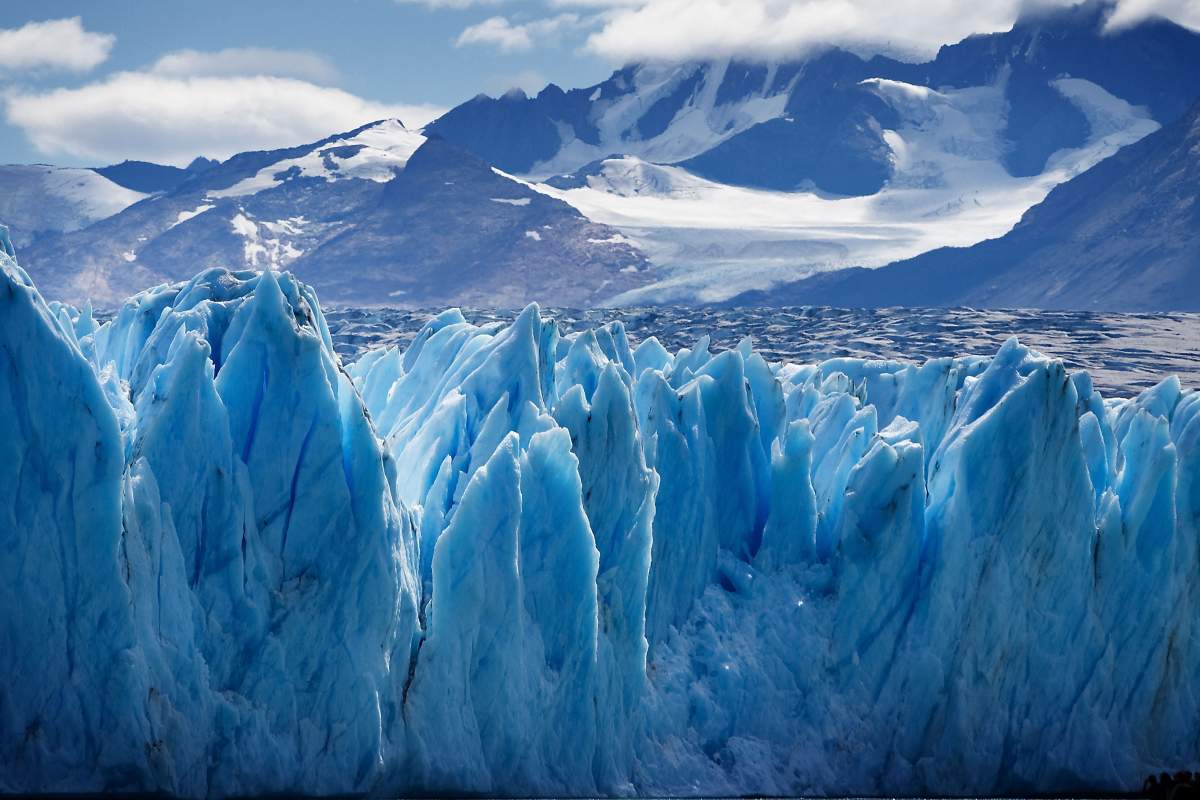
Glaciers can be found on nearly every continent, even Africa. About 10 percent of the world‘s land area is covered by glaciers. But these majestic, blue masses of ice are rapidly retreating, making it even more vital for us to understand them.
Formation and Color
Simply put, glaciers appear blue due to their density. Snow is white because it is full of air bubbles and light scatters when it hits the surface.
But as more snow accumulates through years and packs down, the air bubbles compress and light can pass through the ice more easily. The ice absorbs red (long) wavelengths of white light while reflecting blue (short) wavelengths, creating the turquoise hues seen on glaciers.
A glacier forms as snow remains in the same area year-round. As more layers of snow accumulate, it has to "recrystallize." As time passes, the crystals grow larger and pockets of air get smaller.
After two winters, snow reaches a state, firn, between snow and glacier ice. In most cases, this process takes over one hundred years.
This lengthy process of compression means blue ice is very old in places like Antarctica. About one percent of ice in Antarctica is blue.
Global Warming
Satellite images reveal 10 percent of the world‘s glaciers are in retreat. The oldest, most compressed ice in glaciers often retreats first since it is below sea level and warming ocean temperatures surround and melt it.
Sources And Further Reading:
- "All About Glaciers." Arctic People | National Snow and Ice Data Center. Accessed May 14, 2018.
- "Common Questions and Myths About Glaciers." National Parks Service. November 21, 2017. Accessed May 14, 2018.
- Ferguson, S. "Why Is Glacier Ice Blue?" What Is Glacial Calving? | Alaska Satellite Facility. Accessed May 14, 2018.
- "Ice, Snow, and Glaciers: The Water Cycle." Livestock Water Use, the USGS Water Science School. December 2, 2016. Accessed May 14, 2018.
- Mooney, Chris. "An Alarming 10 Percent of Antarctica's Coastal Glaciers Are Now in Retreat, Scientists Find." The Washington Post. April 02, 2018. Accessed May 14, 2018.
- Oskin, Becky. "Why Are Some Glaciers Blue?" Live Science. May 30, 2015. Accessed May 14, 2018.









